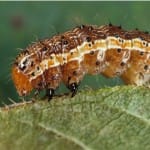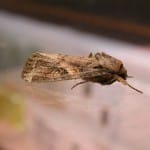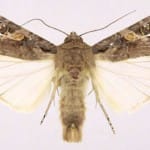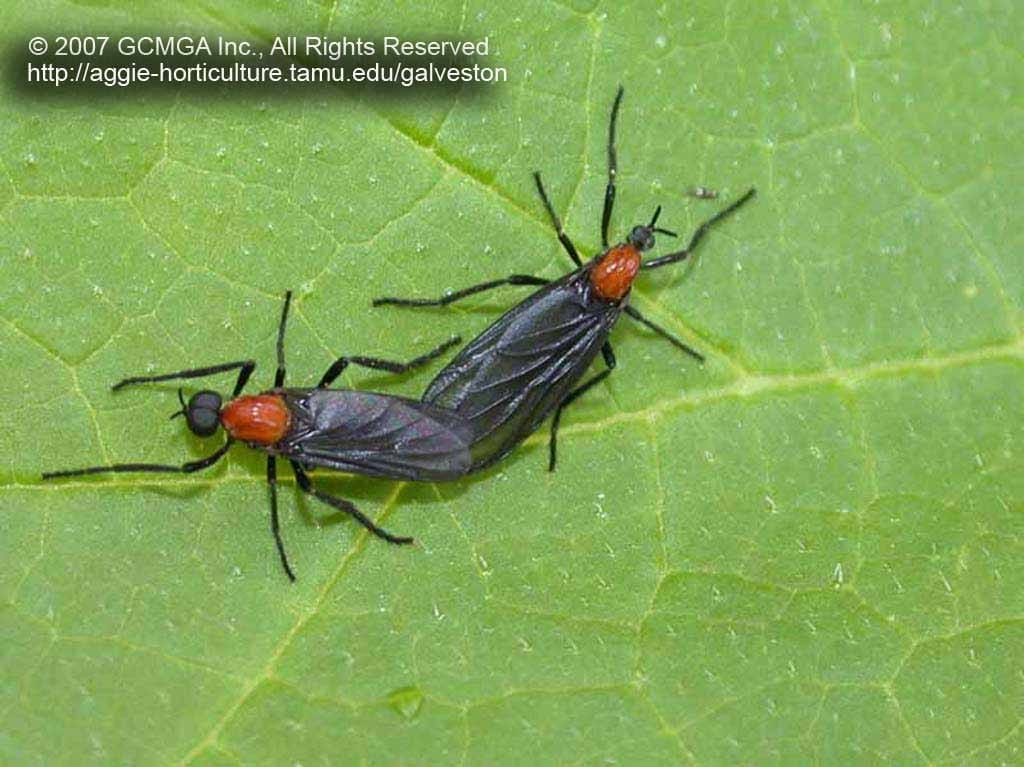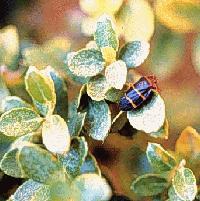Source(s): Will Hudson, Extension Entomologist, The University of Georgia College of Agricultural and Environmental Sciences.
Georgia lawns are under attack. Fall armyworms are chewing their way through turf, leaving destruction in their wake.
Fall armyworms are the larval or caterpillar stage of a nondescript, small gray moth which overwinters in Florida and the tropics. Each year, storms bring the adult moths north. The females lay masses of up to 700 eggs on just about everything. The eggs are cream-colored at first, but turn darker as the tiny caterpillars get ready to hatch.
The first battalion of females lays eggs in south Georgia. Succeeding generations march up the state, traveling on weather fronts and storms. Fall armyworms can’t overwinter in north Georgia. They may survive a mild winter in Florida and extreme south Georgia. The caterpillars hatch from eggs in two to four days, depending on the temperature. Eggs develop to fully grown larvae in two to four weeks. The larvae burrow into the soil and form pupae. Moths emerge in about 14 days.
The first sign that enemy armyworms are near might be large clusters of birds on your lawn. Look closer at the grass, and you may see several caterpillars munching on the turf blades. Although birds eat armyworm caterpillars, they are no match for hundreds of them on one lawn. When hundreds or thousands of armyworms are present, however, homeowners may opt to kill worms with an insecticide .
Young armyworms are one-quarter to three-quarters of an inch long. Mature ones are one and a half inches long. They are dark, with several light stripes down the length of the body. The head or “face” has an inverted Y on it. If you suspect your turf is being infiltrated but can’t find the caterpillars on the grass, use a soap flush to bring them to the surface.
Armyworms rarely kill grass, but some lawns may be severely weakened. Feeding damage, coupled with damage from the recent drought, may justify applying insecticides. In turf or pastures, finding five caterpillars per square foot is a signal to start treating for fall armyworms. Carbaryl (Sevin), pyrethroids and other recommended insecticides are effective caterpillar killers.
Products containing Bt (Bacillus thuringiensis) are effective only on little (a half-inch or smaller) worms. Irrigate before treating, to move the caterpillars out of the thatch. Treat in late afternoon, when the caterpillars are likely to begin feeding. If possible, mow before you treat, and then don’t mow for three days after the treatment.
For information on identifying armyworms, contact your local UGA Cooperative Extension office. See the Georgia Pest Management Handbook for more information on controlling fall armyworms.
Resource(s): Insect Pests of Ornamentals
Center Publication Number: 119
